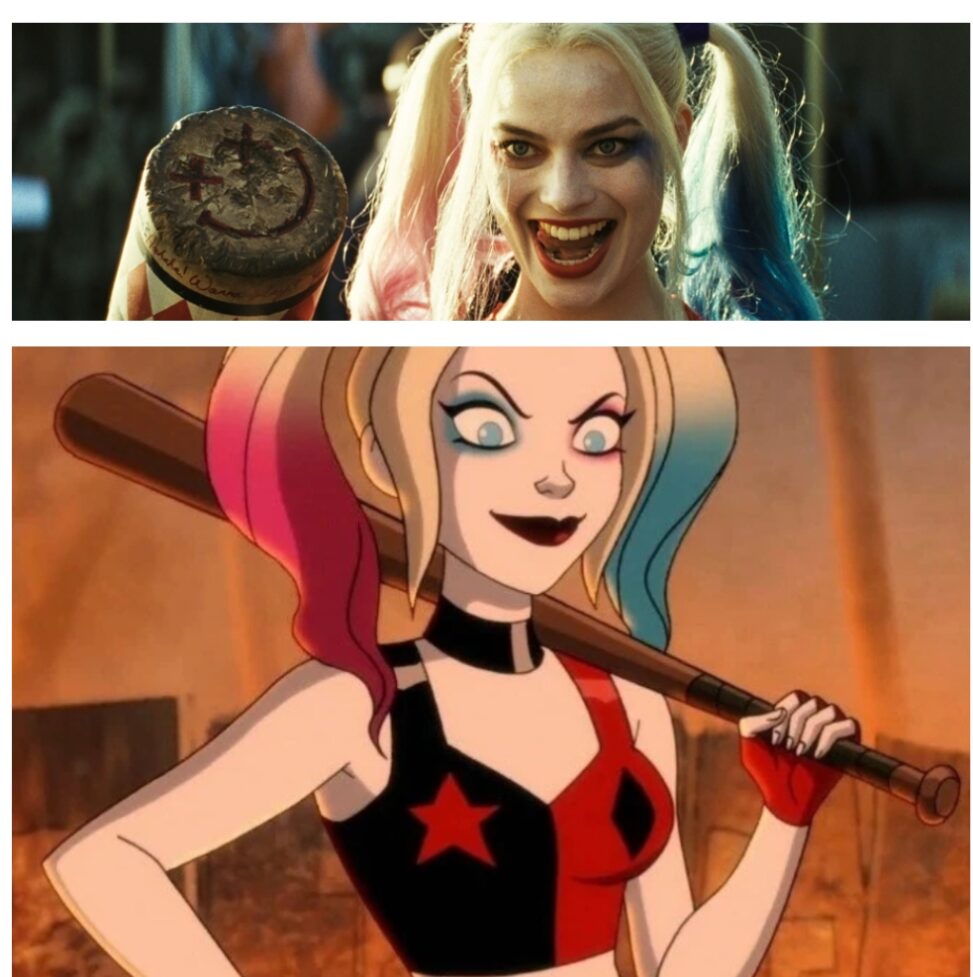Contrasting Interpretations of Harley Quinn: From Psychiatrist to Supervillain
Harley Quinn, initially introduced as Dr. Harleen Quinzel in the 1992 animated TV series Batman: The Animated Series, is a complex media character whose evolution reflects significant shifts in the representation of women in popular culture. Her evolution from sidekick to main antihero challenges traditional gender roles and societal expectations, becoming a symbol of transformation and self-empowerment. In her representation, Harley is a unique combination of violence, humor, vulnerability, and strength, and a multifaceted character who represents both victim and victor. Her problematic evolution as such highlights her status as a character who has evolved from the margins of superhero comics to the center, particularly in feminist studies.
For one, Harley Quinn’s character was initially defined by her role as the Joker’s love interest and sidekick, and she existed for the most part to facilitate his crimes. As Santos and Jürgens (2023) explain, her character was initially introduced as Dr. Harleen Quinzel, a trained psychiatrist at Arkham Asylum. This professional capacity gave her intellect, rationality, and emotional depth, and she was an exception to the general representation of women in superhero comics. Slowly, however, her transformation from Harleen to Harley is driven by the emotional distress she experiences as a result of her association with the Joker. This is not just a physical transformation but a mental one whereby her sanity is replaced with madness and emotional volatility. The authors contend that Harley’s double identity, as a conflict between the rational scientist and the anarchic clown, illustrates a profound inner conflict: “Harley’s identity as both a scientist and a clown embodies duality” (Santos and Jürgens, 2023). This inner conflict illustrates a broader transformation of her character, as she develops from a sidekick to become an independent character who is able to transcend her association with the Joker.
In contrast to her initial role, Harley Quinn’s popularity has grown significantly, especially with her portrayal in Suicide Squad (2016) and the Birds of Prey (2020) film, which depict her as an empowered and self-sufficient antihero. Burke (2021) explores this shift, noting that Harley’s transition from a supporting character to a standalone icon challenges traditional gender roles within the comic book universe. She represents a departure from the stereotypical female sidekick or love interest, offering an alternative to the passive, dependent roles often assigned to women in superhero media. By embracing chaos and unpredictability, Harley embodies the kind of rebellion that attracts a wide range of fans, particularly women and LGBTQ+ individuals, who see in her a reflection of their own experiences with identity and empowerment. As Burke states, “Survey data from comic book stores report that women may comprise somewhere between 40 and 50% of their consumers” (2021), highlighting the increasing inclusivity of comic fandom and the impact of characters like Harley Quinn in reshaping expectations within these spaces.
A key aspect of Harley’s character’s evolution is her humor, which blends slapstick comedy with darker, more violent elements. In Jürgens, Fiadotava, and Clitheroe’s (2024) analysis, they argue that Harley’s humor is central to her identity as a clown and antihero, with her ability to mix absurdity and violence in ways that challenge societal norms. Her comedic violence, often displayed through exaggerated slapstick moments like wielding a giant mallet, contrasts with her tragic backstory, which includes emotional and physical abuse at the hands of the Joker. The authors suggest that this mix of violence and humor allows Harley to subvert expectations about femininity and strength, as she becomes both the victim and the instigator of chaos. This subversion is part of Harley’s larger transformation into a feminist icon, where her ability to embrace both her vulnerability and her strength fosters a sense of self-empowerment in her fans. Jürgens et al. (2024) note that Harley’s evolution into a character who challenges gender roles, through both her physical and emotional transformation, exemplifies how her portrayal has moved away from stereotypical depictions of women in comics.
One of the most significant ways Harley’s character has changed is in the expectations she fosters for real-life behavior and self-perception. As Harley transitions from being a victim of an abusive relationship with the Joker to a self-empowered, independent figure, her character encourages viewers, particularly women, to reclaim agency in their own lives. For example, her refusal to conform to societal expectations and her embrace of both her chaotic and comedic sides can inspire fans to embrace their contradictions and complexities. Burke (2021) discusses how Harley’s popularity among women reflects a broader societal shift, where traditional gender barriers in fandom are increasingly being broken down. Her character’s evolution, marked by a move away from victimhood to agency, can inspire viewers to view their own struggles, vulnerabilities, and challenges as part of a larger, transformative journey. Harley’s portrayal fosters a sense of empowerment and liberation, particularly for those who see her as a model of resilience. However, this portrayal also has potential negative psychological effects. Some aspects of Harley’s character, particularly her hypersexualized image and her romanticized relationship with the Joker, can normalize harmful stereotypes about women and relationships. Jürgens et al. (2024) caution that while Harley’s humor and chaos can be empowering, her violent and sometimes destructive behavior might influence fans to trivialize the consequences of aggression and toxic relationships. This tension between empowerment and harmful reinforcement of stereotypes is evident in the backlash against Harley’s character, with some critics arguing that her portrayal glamorizes unhealthy behaviors. The “romanticization of Harley’s abusive relationship with the Joker” (Santos and Jürgens, 2023) remains a contentious aspect of her character, and that really shows the dangers of presenting abusive dynamics as glamorous or desirable.
References
Burke, Liam. 2021. “Harley Quinn and the Carnivalesque Transformation of Comic Book Fandom.” Transformative Works and Cultures, no. 36. https://doi.org/10.3983/twc.2021.2015.
Jürgens, Anna-Sophie, Anastasiya Fiadotava, and Crystal-Leigh Clitheroe. 2024. “Vaude-Villain and Violent Funster: Harley Quinn and Humour.” Journal of Graphic Novels and Comics 15 (6): 842–61. Doi:10.1080/21504857.2024.2330587.
Santos, Dan, and Anna-Sophie Jürgens. 2023. “From Harleen Quinzel to Harley Quinn: Science, Symmetry and Transformation.” Journal of Graphic Novels and Comics 15 (2): 283–97. Doi:10.1080/21504857.2023.2249978.
Image URLs –
For animated – https://images.app.goo.gl/iRLLJcJzmTqtNX5V9
For Suicide Squad – https://images.app.goo.gl/oZKrvYtx1R5CG4Ej8


Kyrlle Fiel
The student conveys an excellent comparative analysis of Harley Quinn’s development from a psychiatrist to an anti-hero. They successfully draw attention to her transformation from a supporting character to a main character and showed how her development challenges gender norms and increases the representation of women in superhero culture. The research explores her growing independence, intelligence, and violence. The student clearly wrote how Harley transcends from being merely a sidekick by talking about how her character was first characterized by her unhealthy dependence on the Joker until she eventually grew independent. They used good academic sources that support statements regarding Harley’s cultural influence and feminist development. I think involving a little bit of media theory, like the male gaze, anti-hero narratives or the background of women in comics could be used. ADditionally, the analysis misses an intersectional view and focuses on gender, Harley’s abilities nor the ways in which other cultural settings affect how her character is viewed were not really addressed. Visual depiction is another aspect that is often missed. Although hypersexualization is mentioned in the paper, it skips past Harley’s evolving appearance, body language, and outfit design. But overall, the student’s paper gives a thoughtful analysis of Harley Quinn’s evolution, and I think it might be strengthened by adding more visual media analysis, expanding on the intersectional analysis part, and strengthening the historical comparison.